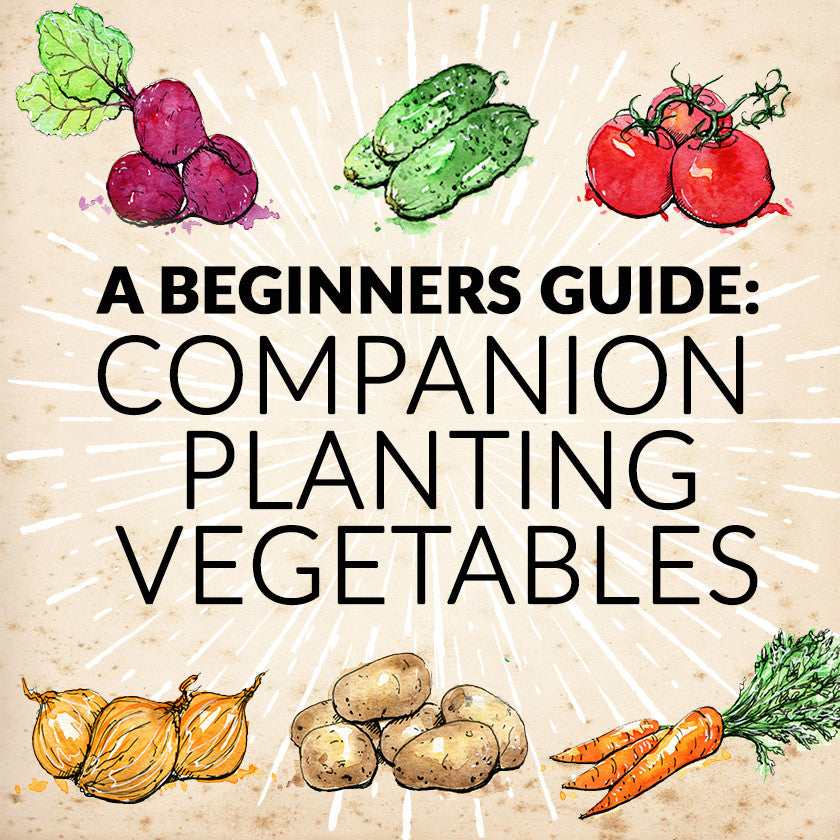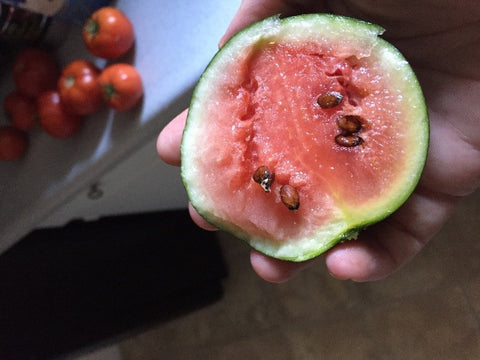
Loading..
My Store
Hours of Operation
Find your nearest store
Results
Loading...

It’s that time of year again!
The frosty nights have lost their way, trees are quickly filling with foliage, while the garden centers prepare for the green thumb rush.
For many, this is an exciting time of planning and preparing for what the year will bring. If you’re like myself you are partially haunted by last year’s fails and flops.

Over the years I have learned a few "tricks-of-the-trade" worth sharing. My hope is that this summer you can focus on your bounty rather than sulking with sad melons.
Before we dive into friends and enemies of your beloved vegetables lets cover the basics of building better soil. For any vegetable to prosper there needs to be a good base to grow in, and without this your plants will struggle. Here are the 3 most common soil types in your garden and how to tame them for your needs.
This firm base is the most common soil type in cooler climates. It’s heavy and hearty but has some disadvantages. Clay soil is great at holding nutrients where the plants need it most. The down side to this type of soil, is that water drains poorly which can lead to rotting roots. Some plants that naturally do well from the compact conditions are: lettuce, herbs, chard, tomatoes and kale as they benefit from sturdy support and readily available nutrients. Some under-performers in this soil are: peppers, beets, carrots, potatoes, cucumbers & melons. If you planning on growing the latter then clay soil can easily be amended using sand and organic material like peat moss.
Pro tip> Store bought compost and top soil is made using peat moss as a base. This will loosen your soil while adding essential nutrients. Here are a few of our favorites…

Quite the opposite of clay soil, sandy soil is the lesser commonly found base in Canadian yards and gardens. Great for drainage this soil is ideal for plants looking to send out deep roots or tubers that benefit from the lack of resistance. As mentioned above water flows easily through this soil so naturally fertilizing is a must! Root vegetables along with potatoes, peppers and melons do well in sandy soil. Some under-performers are tomatoes, kale, broccoli and cabbage.
This is the base every grower aspires to and is often referred to as black gold. This soil works wonders for your garden by taking on the best of both worlds. This soil is able to hold onto nutrients like clay soil while keeping moisture in like a sponge. Looking to get your hands on this soil? Aside from making it yourself over years of breaking down plant matter, loam can be purchased in the form of aged and composted manure. As for vegetables that grow well in loam the list is endless! Because it is not too firm, yet holds the water well, any plant will prosper in loam given the right conditions!
Now that we have the basics covered and you know what you’re working with, let’s talk about companion plants. For this section I will be dividing the vegetables you may be looking to purchase into their "family" or common grouping. This way you can look at your garden plans in terms of what is best for each family and not the single subtleties of each one.
Let's dive into it!

One of the more versatile groups in this family are legumes. These do well in both cold and warm weather climates. They can be eaten raw, cooked to perfection or preserved for later months. Legumes do wonders for your soil through a fungus unique to these plants called "rhizobium". This microorganism works symbiotically with the plant to pull nitrogen from the air placing it within the soil in exchange for the plants starch. This air to soil process is known as "fixing nitrogen". There are many types of fungus that work in co-operation with plants but this is the only one known to feed the essential nutrient needed for growth. Legumes are companions too many of the heavy feeders in your garden due to this process. Nitrogen is the fastest depleted nutrient in soil and is responsible for lush greenery when abundant and yellowing leaves when deficient. The most common plants in this family are peas and beans.
Companion plant legumes along with, before or after the heavy feeders below:
Avoid planting with these fungal resistant vegetables. (Aliums)

Part of the early and late harvest varieties, brassicas house a wide variety of garden favorites high in plant probiotics. Some of these include: broccoli, cabbage, kale, bustle sprouts and cauliflower. Brassicas do well in colder climates and can be relied on early and late in the growing season for their resistance to frost. Brassicas have few enemies in the garden but benefit from being next to those that keep the cabbage moth away. These include aeromantic herbs like dill and mint along with flowers like lavender and borage to attract bees that take over the nearby airspace.
Companion plant Brassicas with:
Avoid planting with these acid loving Solanum plants:

Founding their roots in the tropical climates of Africa, these plants do well in sandy loams of hilled soil. Some familiar vegetables and fruits include: cucumber, zucchini, melons and squash. Cucurbits are able to crawl and vine other plants making some varieties great space savers. Often referred to as “the 3 sisters” Cucurbits do well when planted with corn and beans. The corn stands sturdy offering a trellis for the beans while allowing space for the wandering vines below. Cucurbits have sensitive roots so avoid planting where deep soil is disturbed.
Companion plant Cucurbits with:
Avoid planting with:

Known for their economic potential, this family of vegetables has a staple in many households. Some of these plants include: tomatoes, peppers, potatoes and eggplants. These are all heavy feeders in the soil and like to set up deep roots (or toobers) in the case of potatoes. Solanales typically prefer acidic soil that has a lower PH. For this reason they grow well after nitrogen fixing legumes and should be avoided planting with Brassicas that prefer alkaline soil high in PH. Great for saving space while in the early stages Solanales have strong roots and can handle the disturbance of nearby root vegetables.
Companion plant Solanales with:
Avoid planting with Brassicas:
Hopefully you have gained some inspiration from this post for the dirt road ahead. We would love to hear any questions or feedback in the comments below. So feel free to share trials and tribulations, whether you’re new to the garden scene or a well-seasoned vet. Good luck and let the growing begin!
Resources:
https://www.westcoastseeds.com/garden-resources/articles-instructions/companion-planting/
https://en.wikipedia.org/wiki/Solanaceae
https://en.wikipedia.org/wiki/Rhizobia
https://www.ctahr.hawaii.edu/mauisoil/c_nutrients01.aspx
https://yoururbanalchemy.com/increase-fungi-to-create-better-soil/
https://web.extension.illinois.edu/homecompost/benefits.cfm
http://articles.mercola.com/sites/articles/archive/2016/05/24/applying-compost.asp
{"one"=>"Select 2 or 3 items to compare", "other"=>"{{ count }} of 3 items selected"}
Comments
Leave a comment